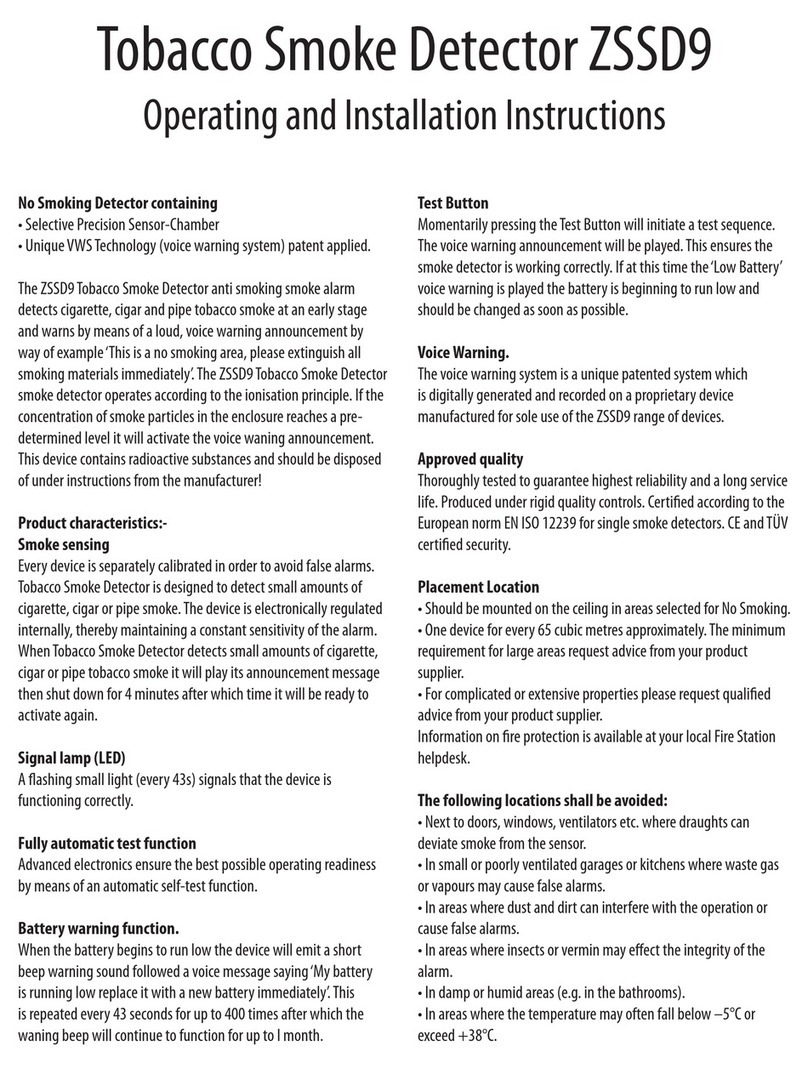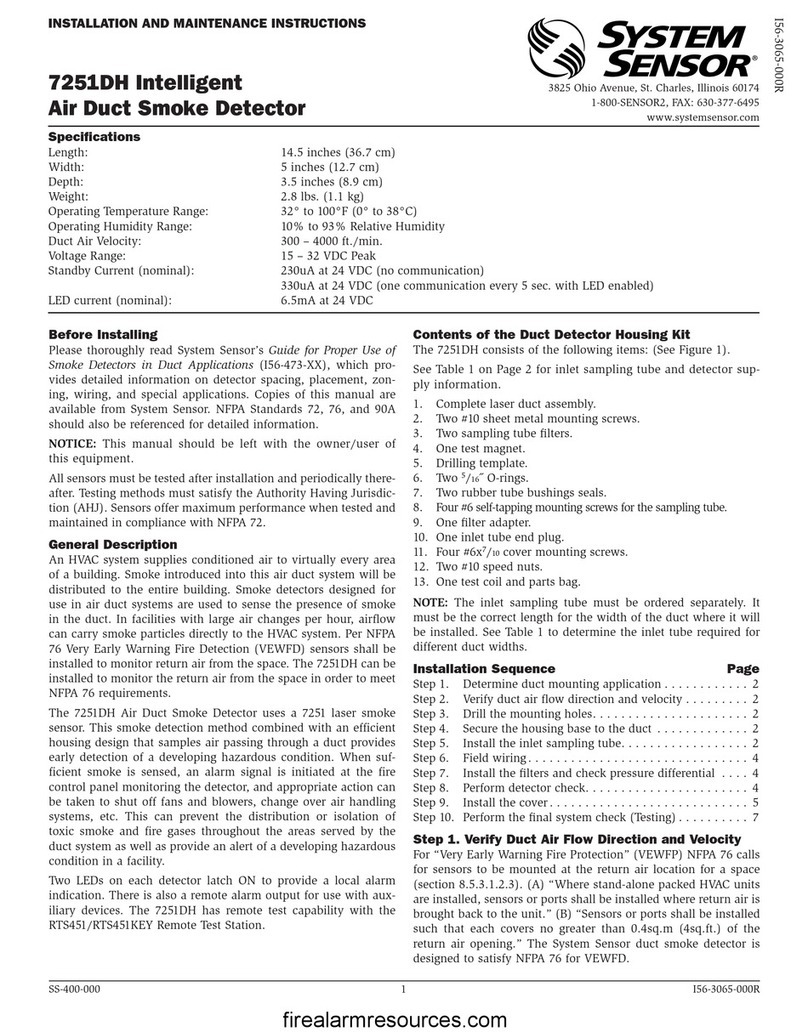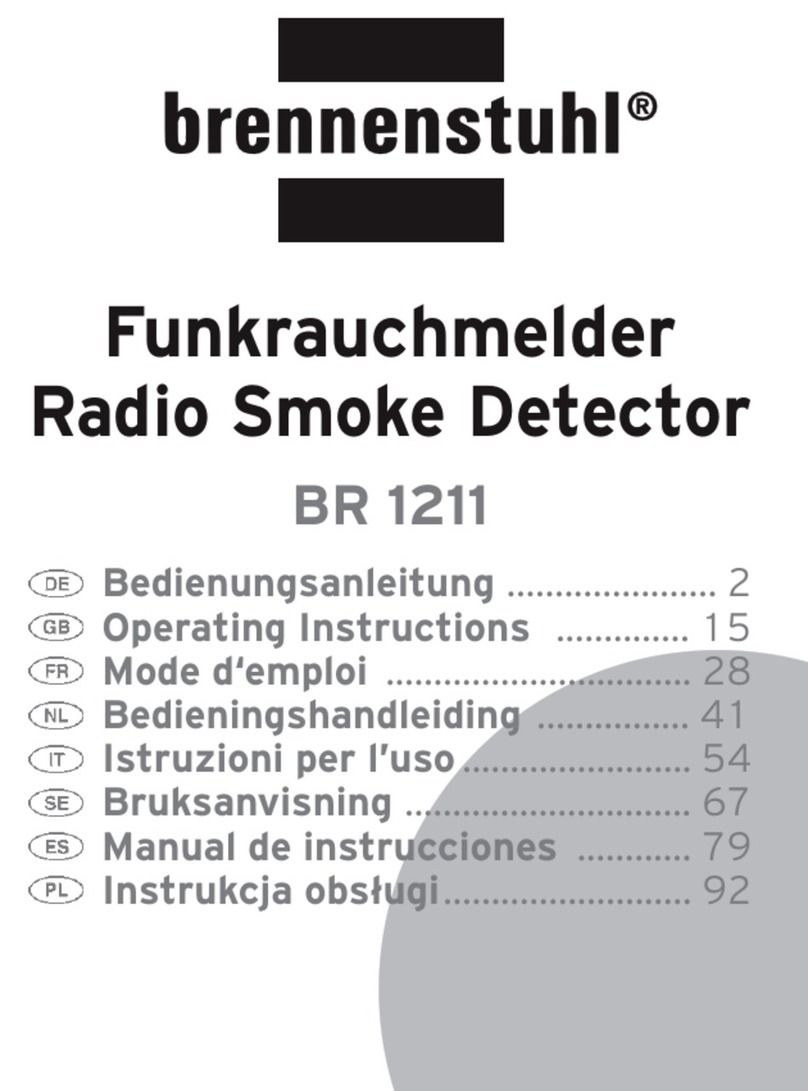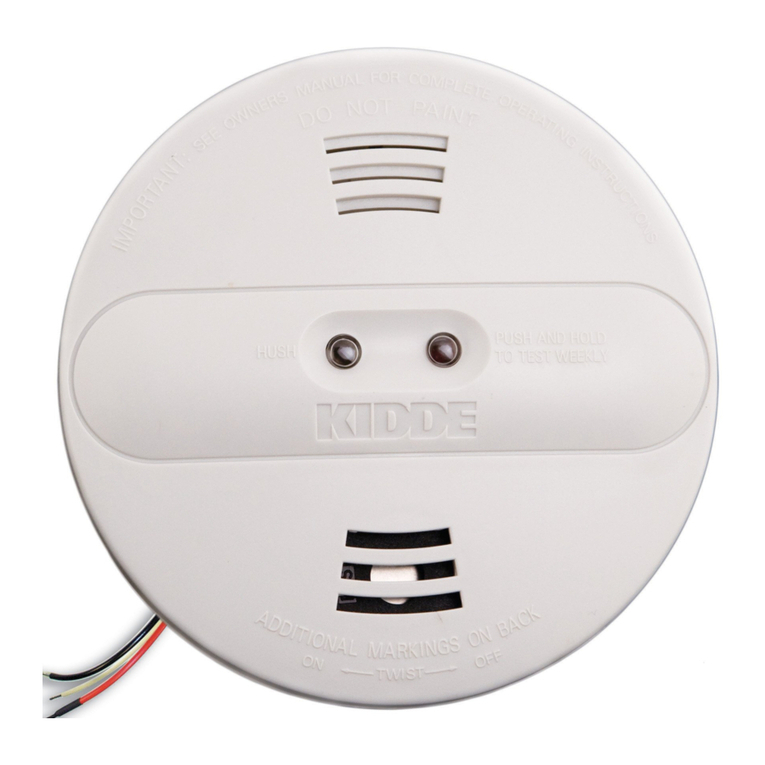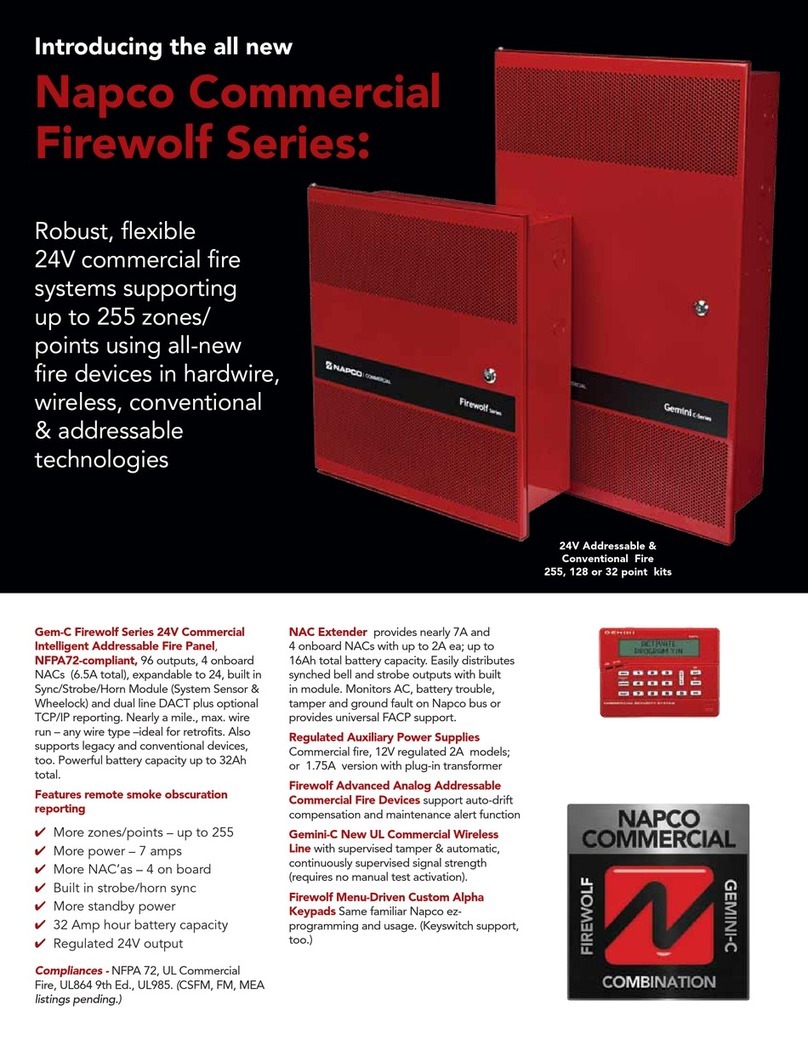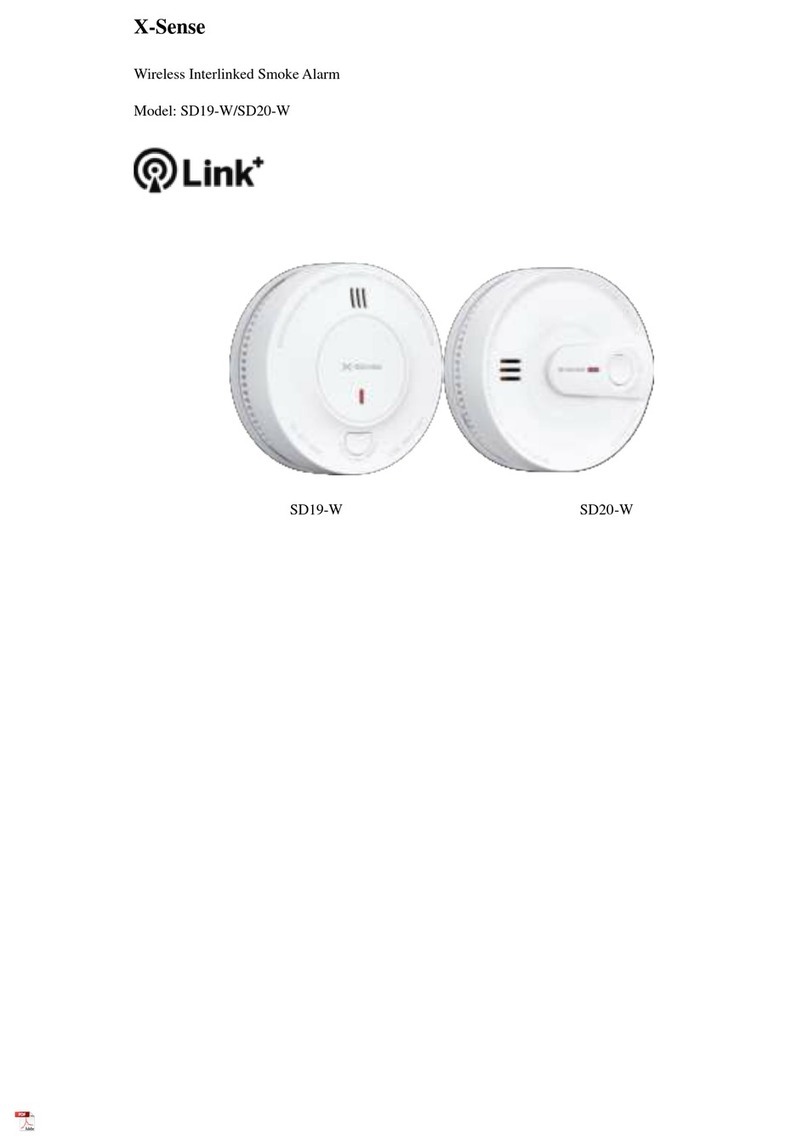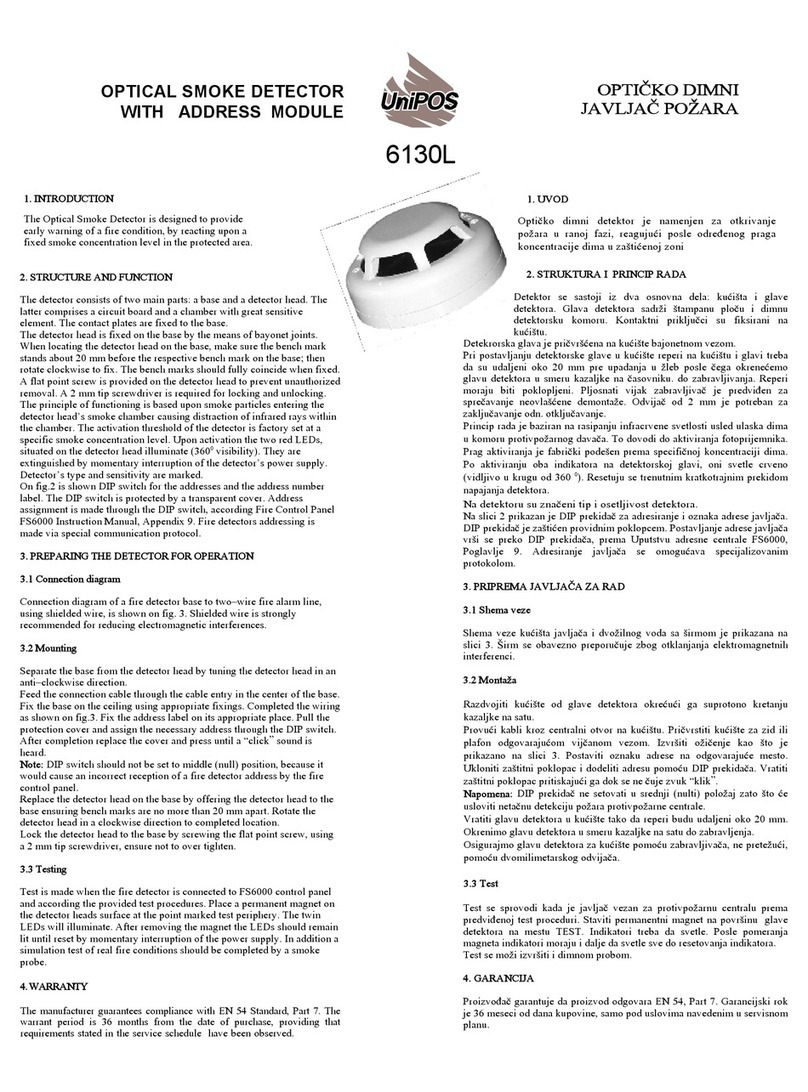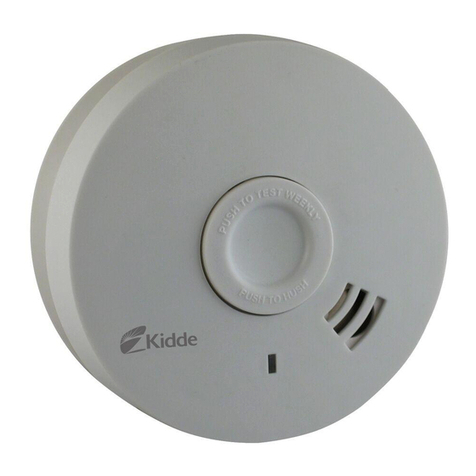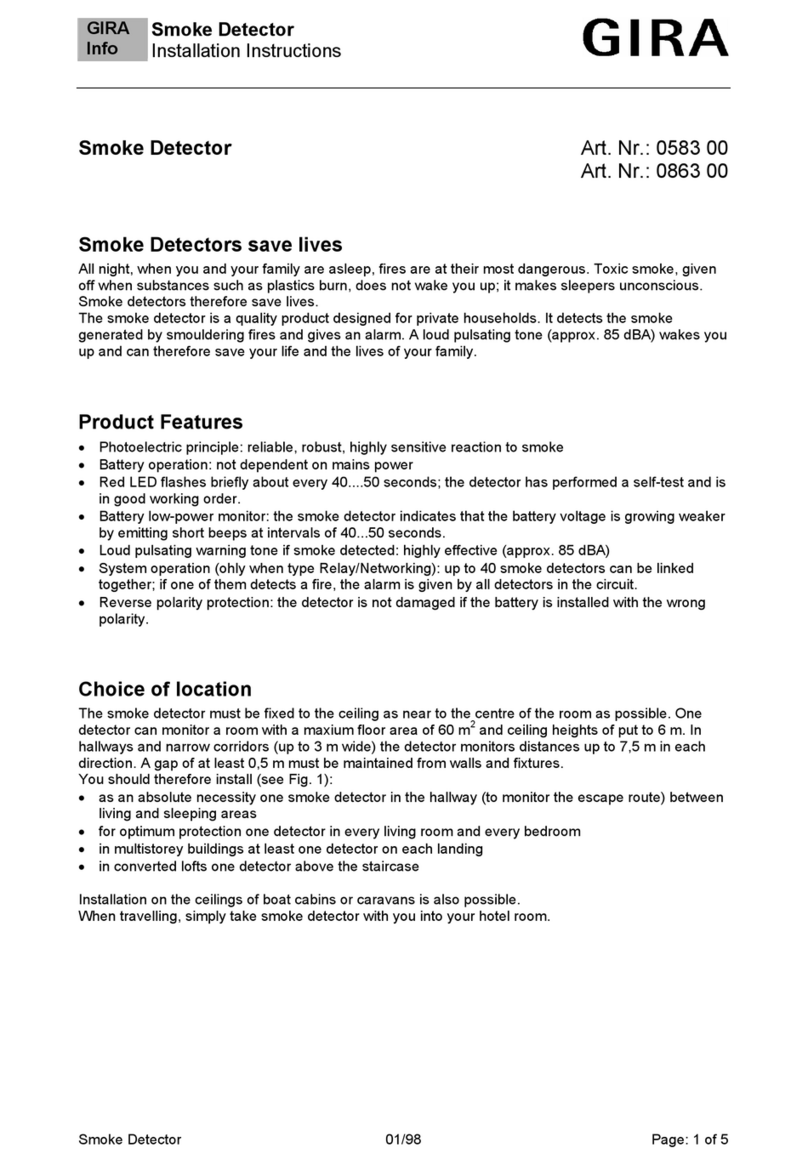Nittan evolution EVC-P User manual

DATE:
PAGE:
Ref No:
ISSUE:
6
evolution
EVC-P PHOTOELECTRIC SMOKE DETECTOR
INSTRUCTION MANUAL
NOV 2003
of1
NISM/EVC-P/01
01
NITTAN (UK) LTD - BRINGING STYLE INTO FIRE DETECTION SYSTEMS
The EVC-P Photoelectric Smoke Detector forms part of a brand new range
of fire detectors from Nittan (UK) Ltd called evolution.
The EVC-P is an elegantly designed, low profile detector which is
aesthetically pleasing, thus enabling it to blend unobtrusively into
modern working environments.
The EVC-P is compatible with other existing conventional fire detection
systems.
evolution.....
www.acornfiresecurity.com
www.acornfiresecurity.com

DATE:
PAGE:
Ref No:
ISSUE:
6
evolution
EVC-P PHOTOELECTRIC SMOKE DETECTOR
INSTRUCTION MANUAL of2
NISM/EVC-P/01
01
Section 1 - INTRODUCTION
TheEVC-Pisanattractively-styled,lowprofile
photoelectric smoke detector for use in conventional fire
detection systems.
The EVC-P has a chemically etched, stainless steel
insect screen therefore reducing the ingress of insects
andairbornecontaminants.
EVC-Pfeatures:
*Opticaldetector,detectingvisibleparticles
of combustion
*Lowprofile,stylishappearance
*Supplied withprotective dustcover, (remove
during commissioning)
*Non-polarisedterminals
*Unauthorisedheadremovalsignalfacility
* Low monitoring current
* Patented OMNIVIEWTM 360oLED fire alarm indicator
*Remoteindicatoroutput
* Compatible with STB-4, STB-4SD and STB-4SE
bases
Section 2 - EVC-P OPERATION
The smoke chamber of the EVC-P is constructed so
that light cannot enter from outside, but smoke can pass
through the chamber slots. The EVC-P utilises the light
scatter sensing principle. The LED pulses every 8
seconds to maintain a low monitoring current. A quick
charge time (20 seconds) is also achieved. The detector
incorporatesanalarmverificationfunctionwhichrequires
two successive pulses before an alarm is given.
The interval between the first and second pulse is
automatically reduced to four seconds after the first
alarmlevel is monitored. Thedetector design provides
strong immunity to air velocities, contamination and RF
interference.
The geometry of the smoke chamber and optics support
assembly is designed to give the best possible signal to
noiseratio,resultinginexcellentresponse
characteristics.
CONTENTS:-
Section1 - Introduction - Page 2
Section 2 - Operation - Page 2
Section 3 - Detector Models - Page 3
Section 4 - Base Models - Page 3
Section 5 - Installation - Page 3
Section 6 - Maintenance &
Cleaning - Page 3
Section 7 - Specification - Page 4
Section 8 - Environmental
Parameters:- - Page 5
- Temperature - Page 5
- Humidity - Page 5
Section9 - EMC - Page 5
Section10 - Connections - Page 6
Section11 - Dimensions - Page 6
www.acornfiresecurity.com
www.acornfiresecurity.com

DATE:
PAGE:
Ref No:
ISSUE:
6
evolution
EVC-P PHOTOELECTRIC SMOKE DETECTOR
INSTRUCTION MANUAL of3
NISM/EVC-P/01
01
Section 3 - DETECTOR MODELS
The EVC-P photoelectric smoke detector is supplied, as
standard,withfourterminals.
The EVC-P has the facility to activate a remote LED
indicatoror auxiliaryfunction,asstandard.
The terminals on the EVC-P detector head are
configuredasfollows:-
Terminal 3 = zone positive in/out
Terminal 1 = zone negative in
Terminal 6 = zone negative out
Terminal 5 = 20 mA @ 24V d.c. switched output
Section 4 - BASE MODELS
A variety of bases are available for use with the
EVC-P detector. It is important to use the correct base
for each application. The standard range available is as
follows:-
i) STB-4base:having4terminals,forstandard use
withEVC-Pdetectorincludingtheauxiliaryoutput
function.
ii) STB-4SD base: This is identical to the standard
STB-4 base, but also includes a schottky diode for head
removal fault monitoring. The schottky diode is used in
some fire systems to ensure power is maintained, in the
eventofanunauthoriseddetectorheadremoval,toother
detectors further on the zone.
iii) STB-4SE base: Similar to STB-4 base, except
deeper.
iv) STB-4SE-24VRbase: Relaycontactbase.
Section 5 - INSTALLATION
In normal use, the EVC-P detector will be installed at
ceiling level. Pass the field wiring through the cable hole
in the centre and from the rear of the base. Offer up
and affix the base to the ceiling or conduit fitting with
screws via the base mounting holes. Connect the field
wiring to the base terminals, as detailed on page 6
making sure the wiring does not obstruct fitting of the
detector head. Fit the detector head by inserting it into
the base and turning clockwise until the notch in the
detector rim aligns with base locking screw. The
OMNIVIEWTM 360oindicator permits visibility from any
angle.
Fit the plastic dust cover supplied over the detector to
keep out dust etc, until the system is commissioned. If
the dust cover is not fitted and the environment is
slightly dusty, such as when building work is being
completed, for example, problems of false alarms are
likely to occur after commissioning unless cleaning of
the detector is undertaken. At commissioning, the dust
covershouldberemovedanddiscarded.
NOTE: THE PLASTIC DUST COVER MUST BE RE-
MOVED FROM THE DETECTOR IN ORDER FOR THE
DETECTORTOFUNCTIONCORRECTLY.
Section 6 - MAINTENANCE AND
CLEANING
Maintenance:
The EVC-P detector is a high quality product engineered
for reliability. In order to obtain optimum performance,
periodic maintenance is required. If proper preventative
maintenance is not carried out, there is a likelihood of
malfunction, as a dirty detector is more likely to cause a
false alarm.
Servicing:
Servicing of the system should be carried out in accord-
ance with the requirements of BS 5839 Part 1, Fire
Detection and Alarm Systems for Buildings: Code of
Practice for System Design, Installation and Servicing.
The maintenance procedures described below should be
conductedwiththefollowingfrequency:
Onemonth after installation: RoutineInspection
and every 3 months
thereafter.
Every6 months: OperationalTest
Every12months: Functional Test and
Cleaning.
Allabovefrequenciesofmaintenance aredependenton
ambient conditions.
Routine Inspection:
i) Ensure the detector head is secure and undamaged.
ii) Check the smoke entry apertures are in no way
obstructed.
iii) Ensure the surface of the detector’s outer cover is
clean. If there are deposits due to the presence of oil
vapour, dust etc, then the detector should be cleaned in
accordance with the cleaning instructions detailed later
in this manual. It may be advisable to ensure that such
cleaning is conducted regularly in the future.
iv) Ensure no equipment which may generate combus-
tion products or fine airborne particles, has been
installed in the vicinity of the detector since the last
routine inspection. If such equipment has been installed,
then you should notify the Fire Safety Officer or other
competantauthority thatits presence may
cause false alarms.
www.acornfiresecurity.com
www.acornfiresecurity.com

DATE:
PAGE:
Ref No:
ISSUE:
6
evolution
EVC-P PHOTOELECTRIC SMOKE DETECTOR
INSTRUCTION MANUAL of4
NISM/EVC-P/01
01
OperationalTest:
The purpose of the Operational Test is to confirm the
detector’s correct operation in response to a smoke
condition.
i) Take any necessary precautions at the control panel
to limit the sounding of the alarm sounders/bells and
any fire service summoning device.
ii) Introduce a discrete amount of smoke into the
detector head, e.g. using a 'No Climb -Solo' smoke test
head. Check that the detector gives an alarm condition
within 15 seconds. Check the LED indicator on the
EVC-Pdetectorilluminatesandanyremote indicator
LED fitted also illuminates.
iii) After the detector has given the alarm condition,
reset the detector from the control panel. It may be
necessary to allow a short time to elapse before
resetting the detector, to allow any residual smoke
from the test to disperse.
iv) Before proceeding to the next detector, ensure that
the detector just tested does not re-operate due to the
presence of residual smoke.
FunctionalTest:
The detector may be returned to Nittan (UK) Ltd for
functional testing.
Cleaning:
Note:ThedetectorheadshouldNOTbe
disassembled.
i) Carefully remove the detector head from its base.
ii) Use a soft, lint-free cloth, moistened with alcohol for
sticky deposits, to clean the plastic casing.
iii) Using a soft bristle brush (e.g. an artist's paint-
brush)carefully brush between the vanesin a linear
motionawayfromthesmokeentryapertures.
iv) It is permissible to blow dust from the chamber,
withoutremovingthe cover, using acleanair line.
v) If the unit needs further cleaning, or is damaged or
corroded,pleasereturnthecomplete detector to Nittan
(UK) Ltd. for service.
Section 7 - SPECIFICATIONS
ModelReference: - EVC-P
ComputerReference: - F02N82200
DetectorType: - Photoelectric smoke
detector
Sensitivity - 3%Obscuration per
metre
Supply Voltage: - 24V dc nominal
(range18Vto30V)
Voltage Ripple: - 20% maximum
Alarm Characteristics: - 6V d.c. in series with
375Rbetween
+(terminal 3) and
- (terminals 1,6)
at 25 deg. C
Monitoring Current: -40
µ
A max.
at 24V d.c.
Alarm Current: - 50 mA. max.
Charging Time: - 20 seconds
Ambient Temperature
Range: - -10 oC to +55 oC
Standard: - EN54-7:2000
EMCConformance: - BSEN50130-4:1996
(Immunity)
BSEN61000-6-3:2001
(Emissions)
Mass: - 118g(excludingbase)
IPRating: -41
www.acornfiresecurity.com
www.acornfiresecurity.com

DATE:
PAGE:
Ref No:
ISSUE:
6
evolution
EVC-P PHOTOELECTRIC SMOKE DETECTOR
INSTRUCTION MANUAL of5
NISM/EVC-P/01
01
Section 8 - ENVIRONMENTAL
PARAMETERS
TemperatureConsiderations:
Over the range from -10 oC to +55 oC.
Humidity:
Relative Humidity of up to 95%, measured at 50 oC, non
condensing.
Section 9 - EMC
Installation
The installation shall be in accordance with the
regulationseitheroftheapprovalbodyforanapproved
system, or otherwise, to the national code of practice/
regulations for the installation of the fire alarm system,
e.g. BS 5839 part 1.
ElectromagneticCompatibility(EMC)
On a site where there is an unusually high level of
potentialelectricalinterference,e.g.whereheavy
currentsarebeingswitched or where highlevelsofR.F.
are prevalent, care then must be taken in the type and
routing of cables. Particular care should be given to the
separationof zone wiring fromthe cable carrying the
interference.
www.acornfiresecurity.com
www.acornfiresecurity.com

DATE:
PAGE:
Ref No:
ISSUE:
6
evolution
EVC-P PHOTOELECTRIC SMOKE DETECTOR
INSTRUCTION MANUAL of6
NISM/EVC-P/01
01
Section 10 - CONNECTIONS
Section 11 - DIMENSIONS
15mm
33mm
∅104mm
RIL
+
If +ve supply derived from zone
then RIL must be LED type
Max.currentthrough
5=20mA@24V d.c.
STB-4base
STB-4-SEbase STB-4SDbase
_
+
165
35
16
3EOL
RIL must be 6V, 20mA max.
www.acornfiresecurity.com
www.acornfiresecurity.com
Table of contents
Other Nittan Smoke Alarm manuals
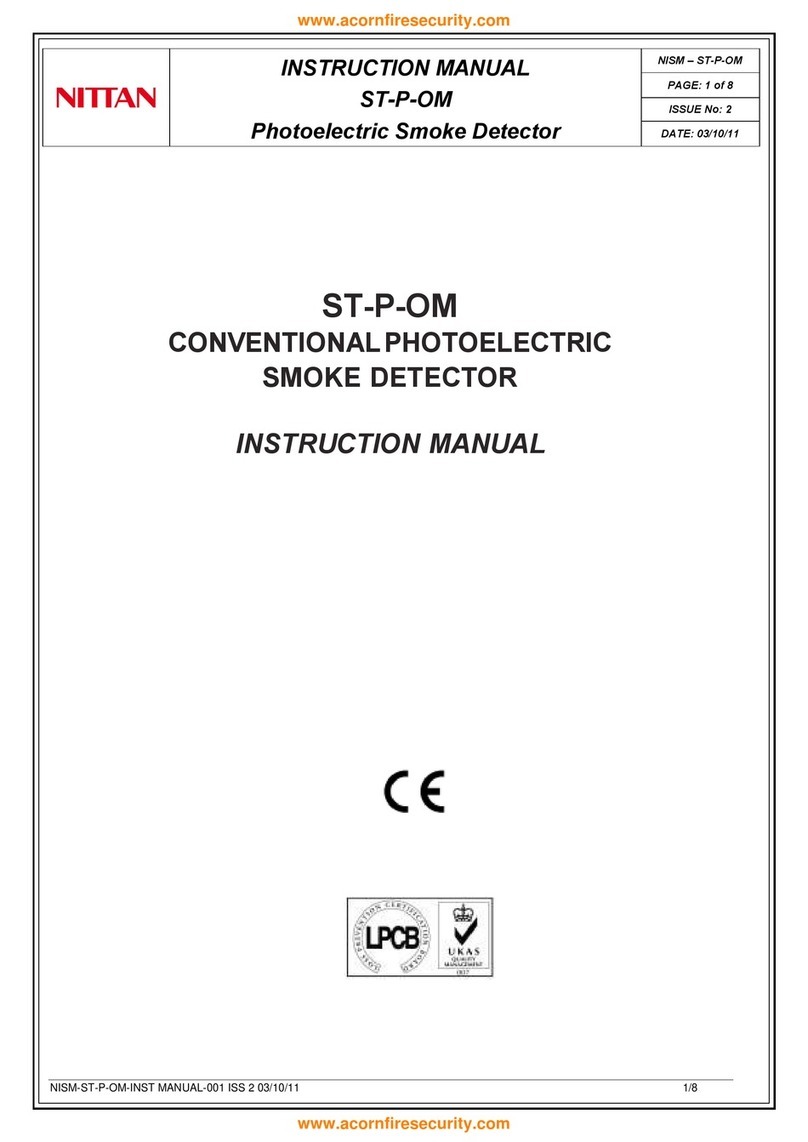
Nittan
Nittan ST-P-OM User manual
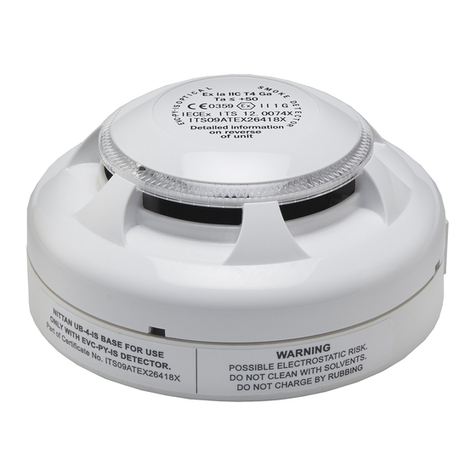
Nittan
Nittan EVA-PYH User manual
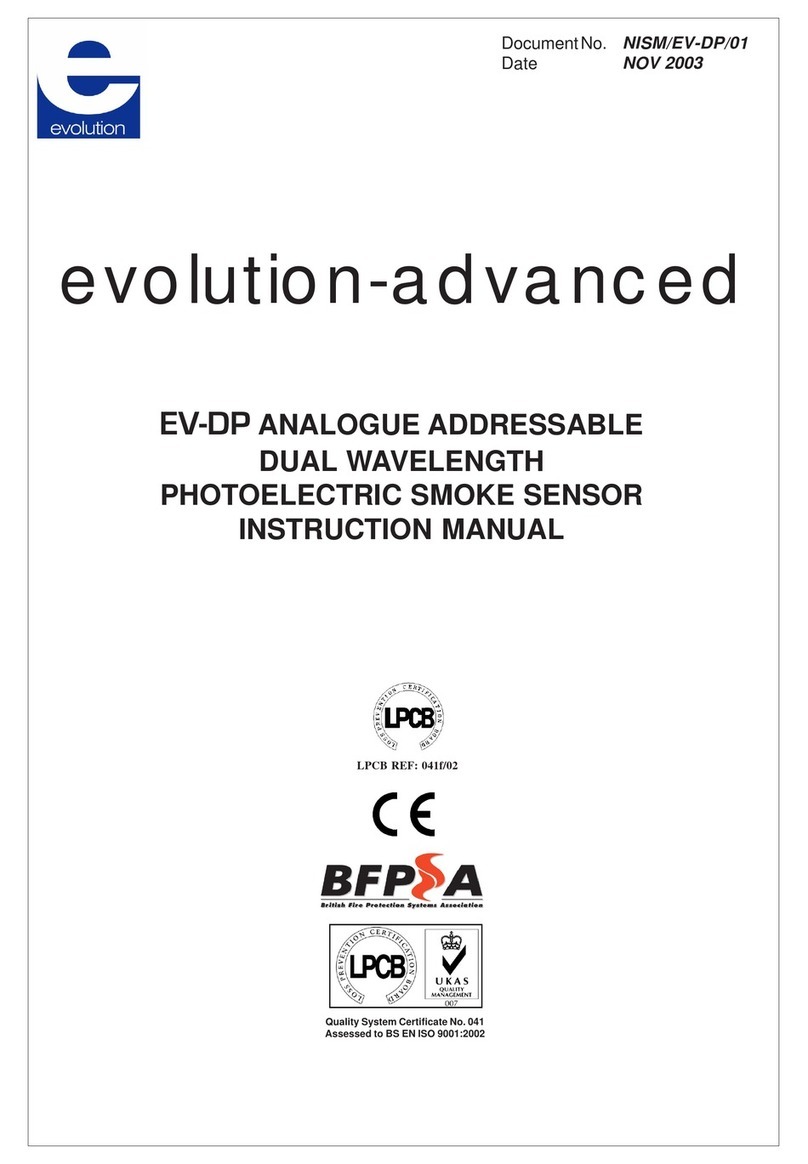
Nittan
Nittan Evolution-Advanced EV-DP User manual
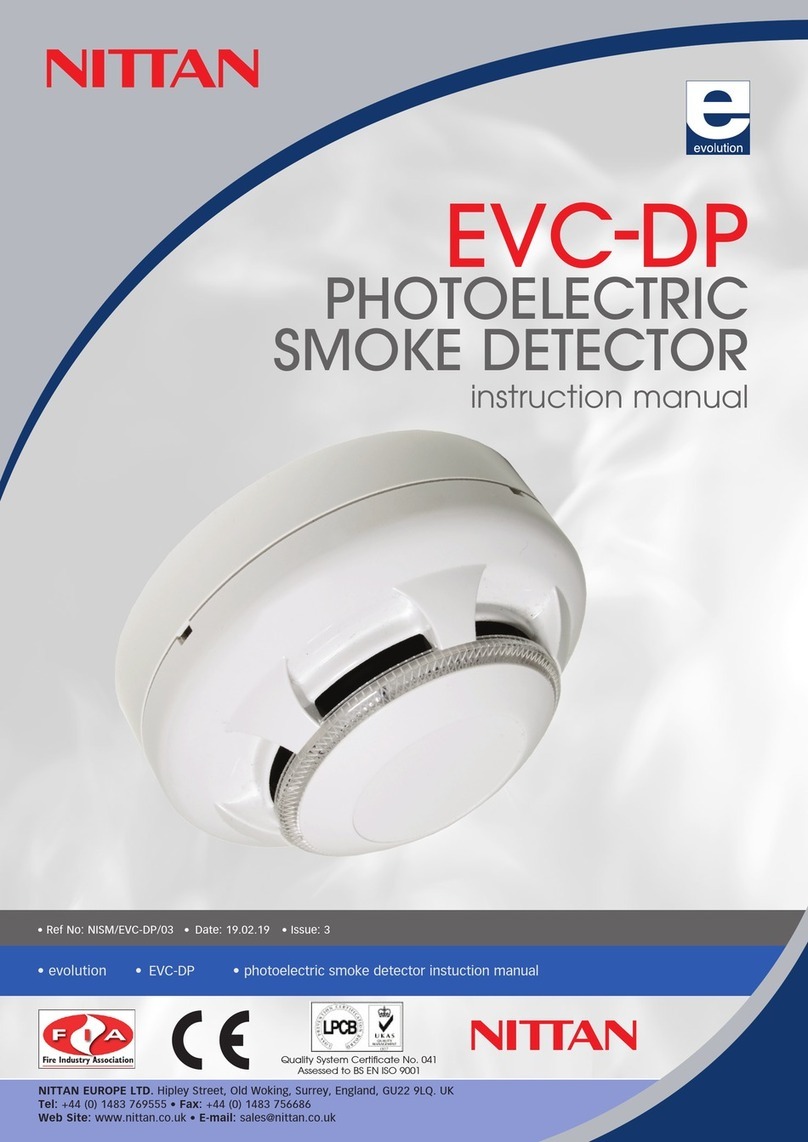
Nittan
Nittan Evolution EVC-DP User manual
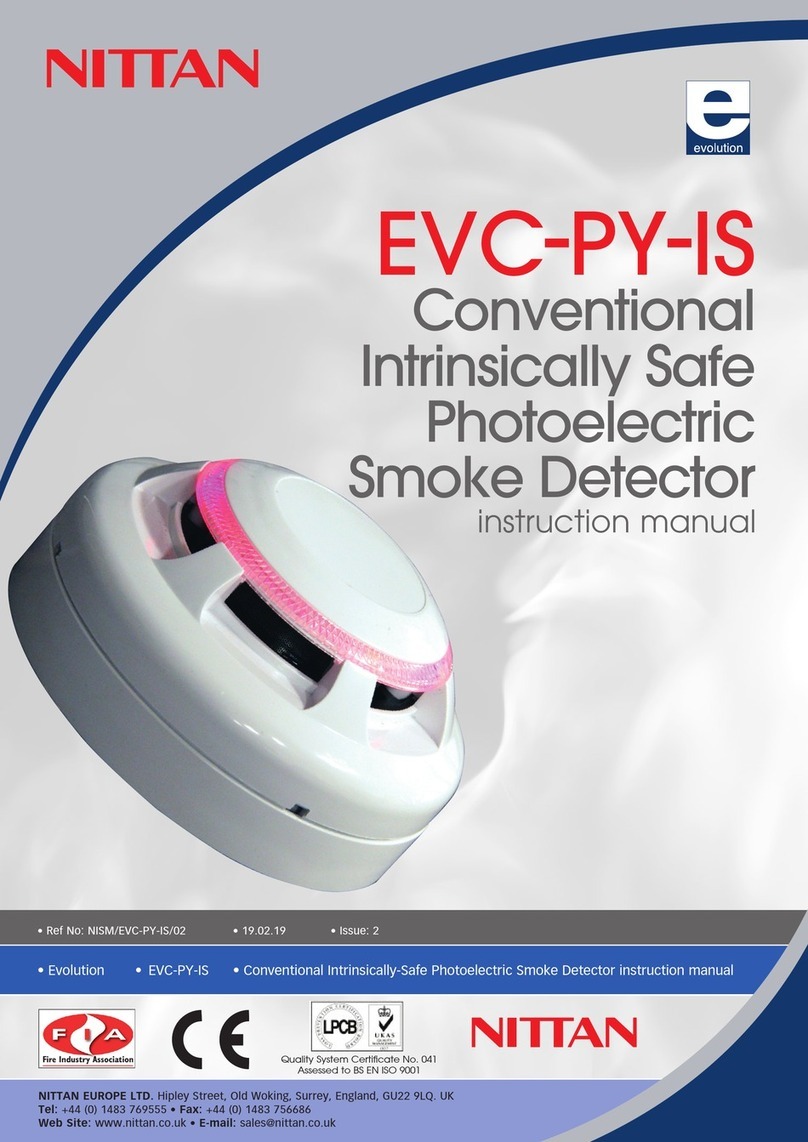
Nittan
Nittan EVC-PY-IS User manual
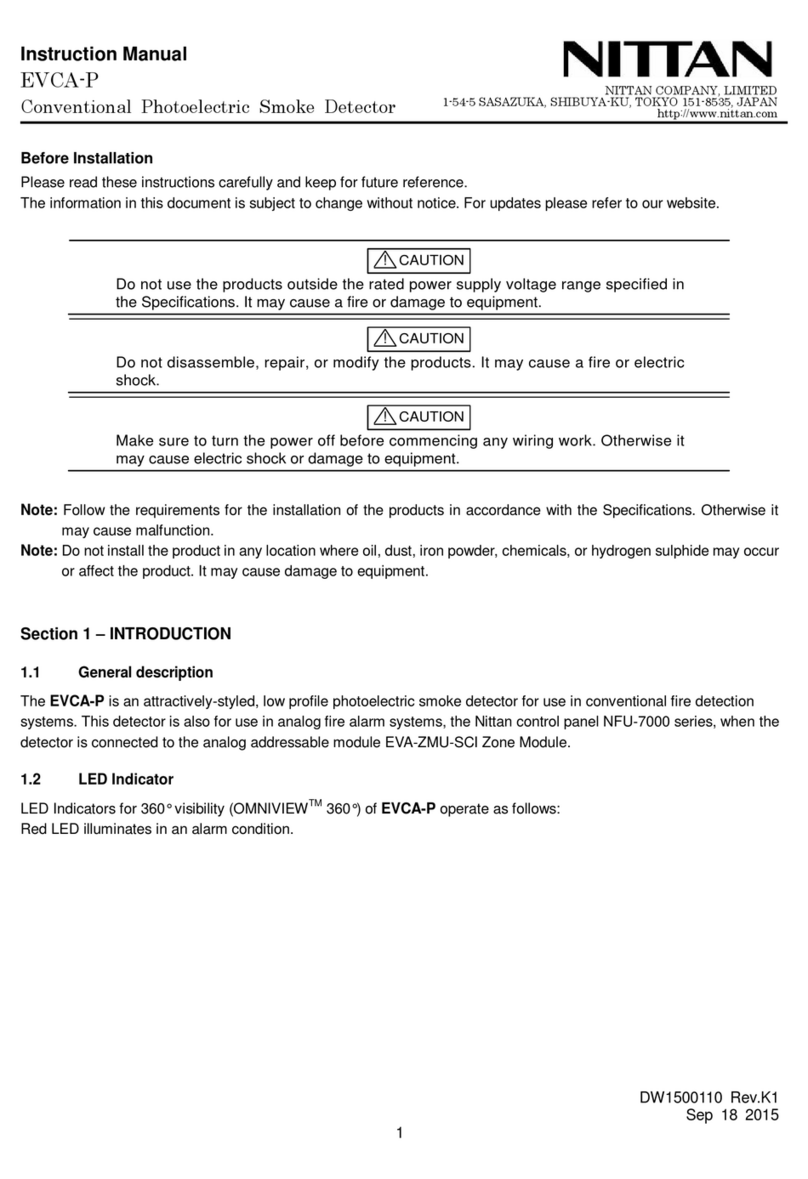
Nittan
Nittan EVCA-P User manual
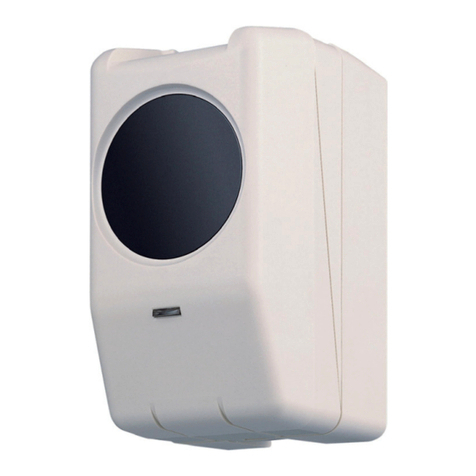
Nittan
Nittan CKLD-KPT2 User manual
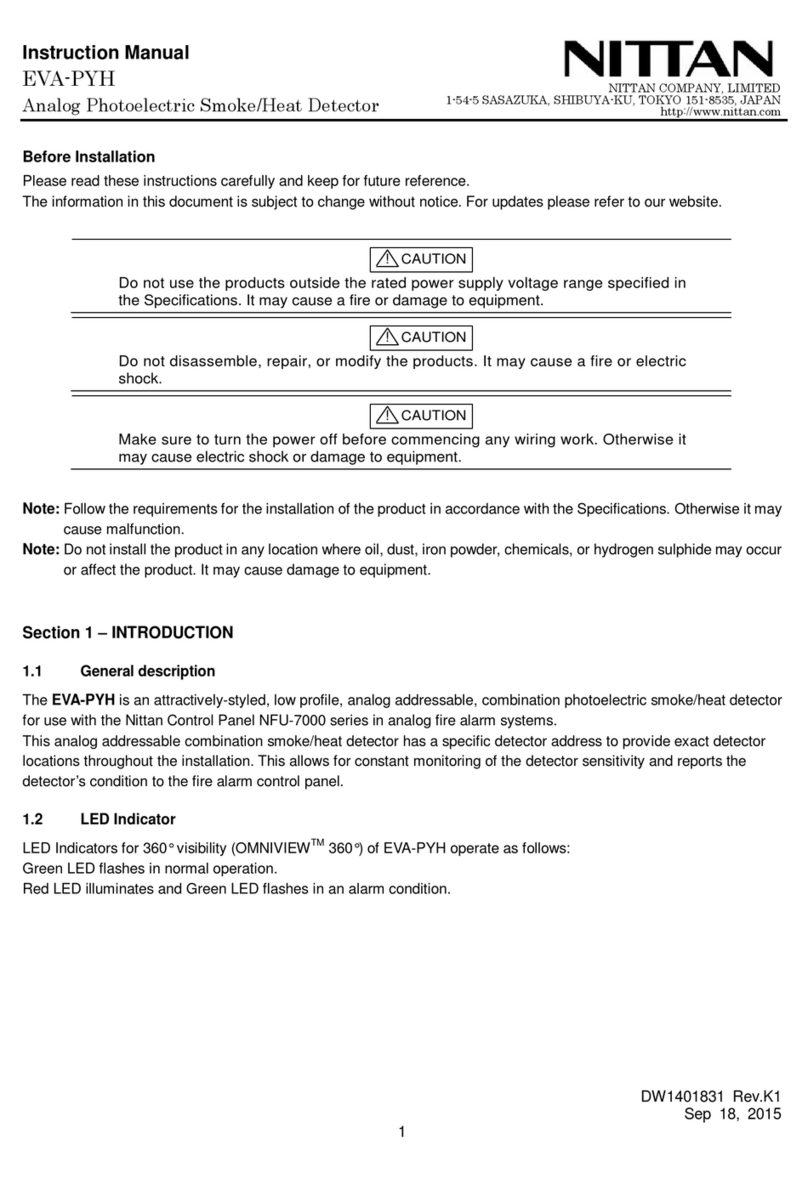
Nittan
Nittan EVA-PYH User manual
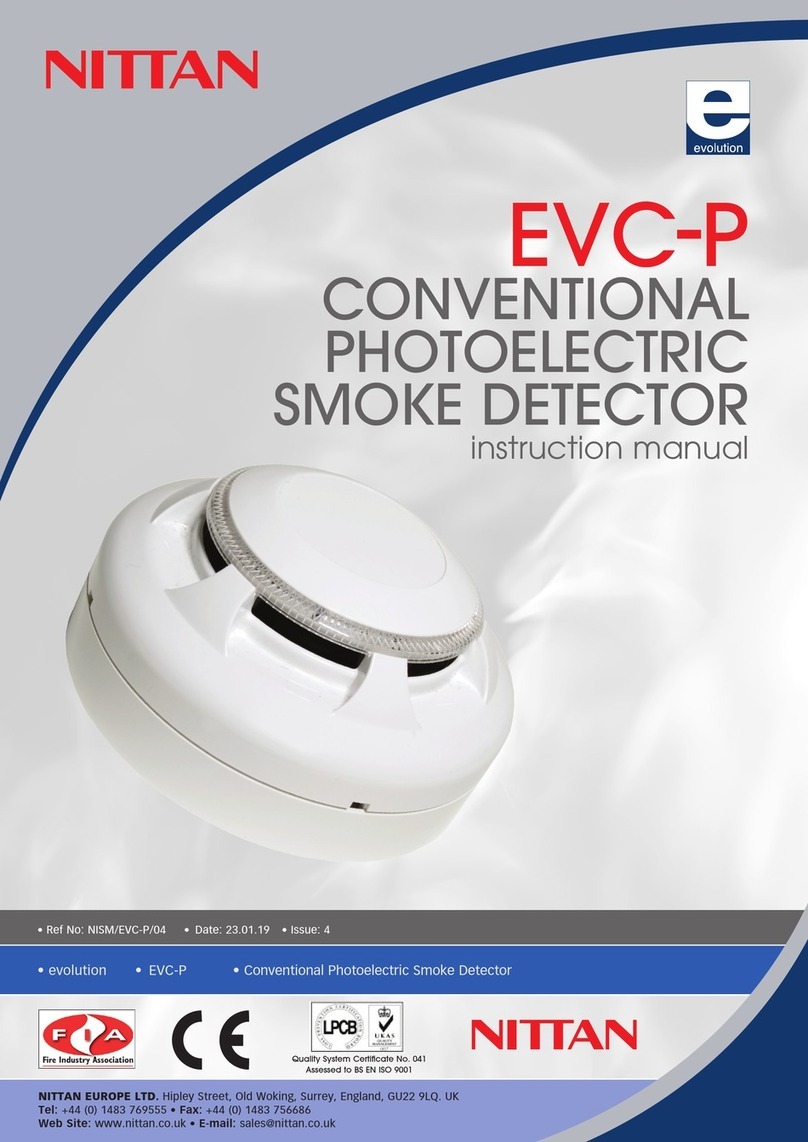
Nittan
Nittan EVC-P User manual

Nittan
Nittan ST-P-AS User manual
Popular Smoke Alarm manuals by other brands

System Sensor
System Sensor 2251-COPTIR Installation and maintenance instructions
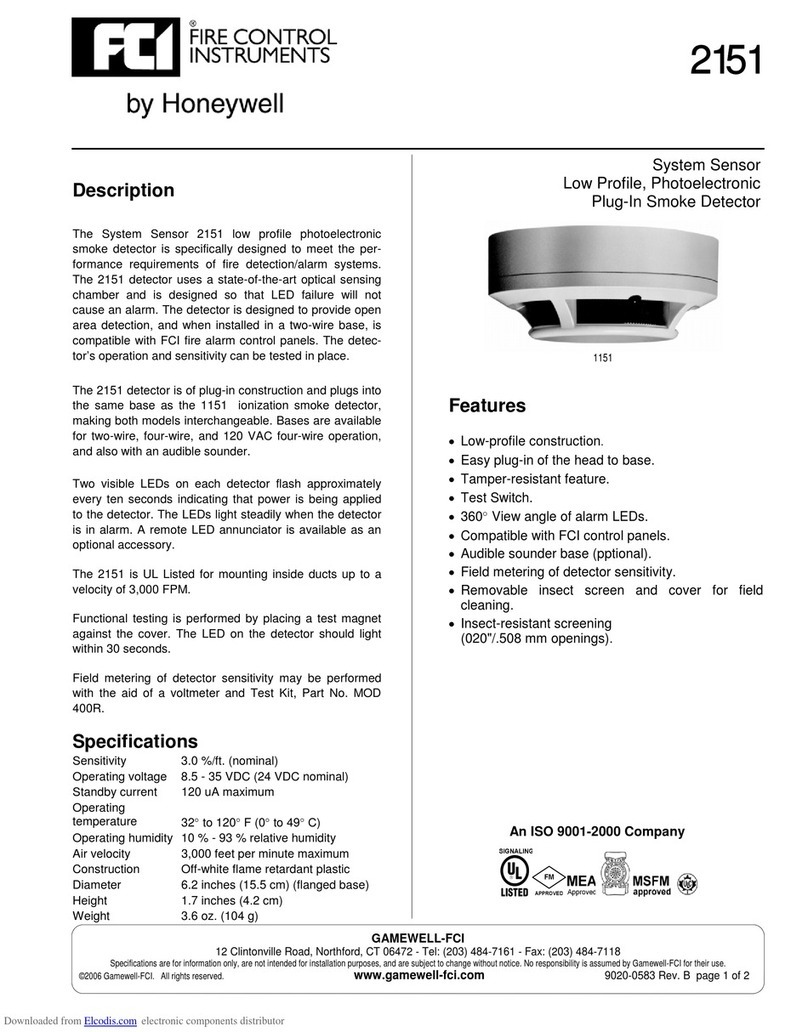
Honeywell
Honeywell FCI 2151 quick start guide
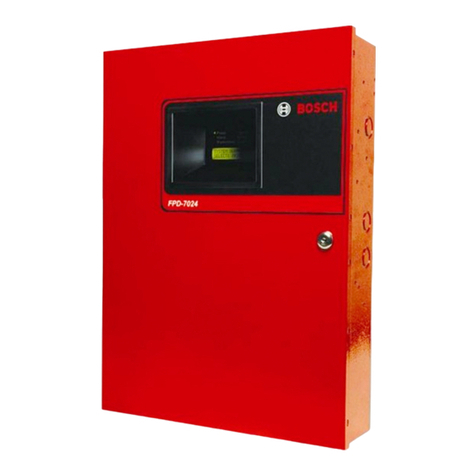
Bosch
Bosch FPD-7024 operating instructions
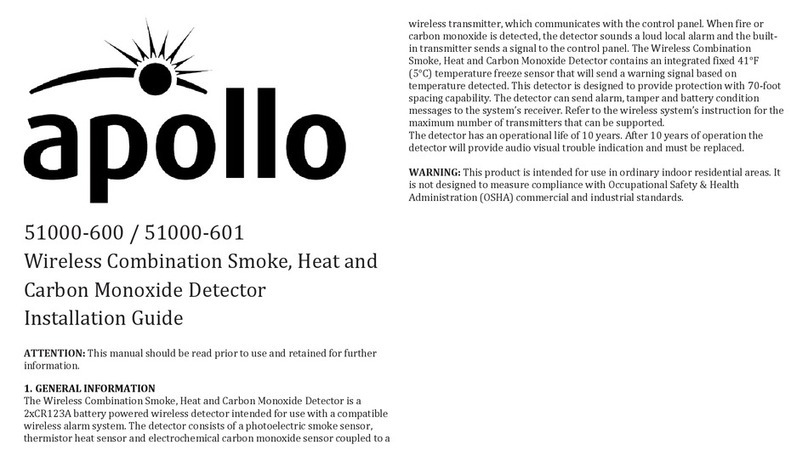
Apollo
Apollo 51000-600 installation guide

SITERWELL ELECTRONICS CO.,LIMITED
SITERWELL ELECTRONICS CO.,LIMITED GS536G user manual

Uplink
Uplink 4555 Installation & user guide


